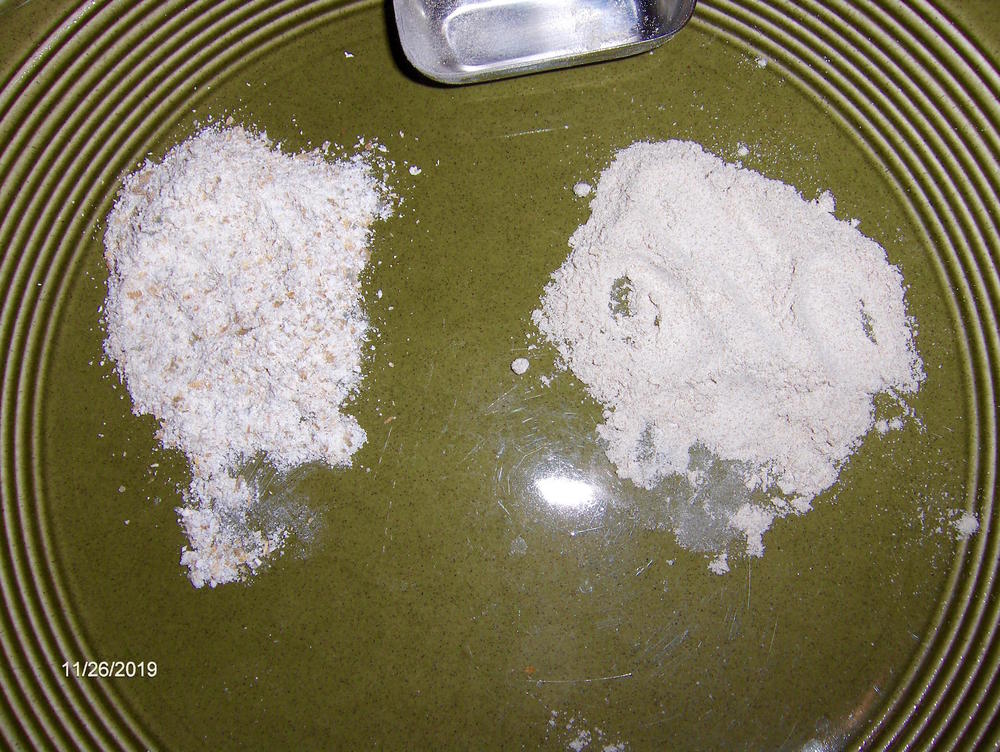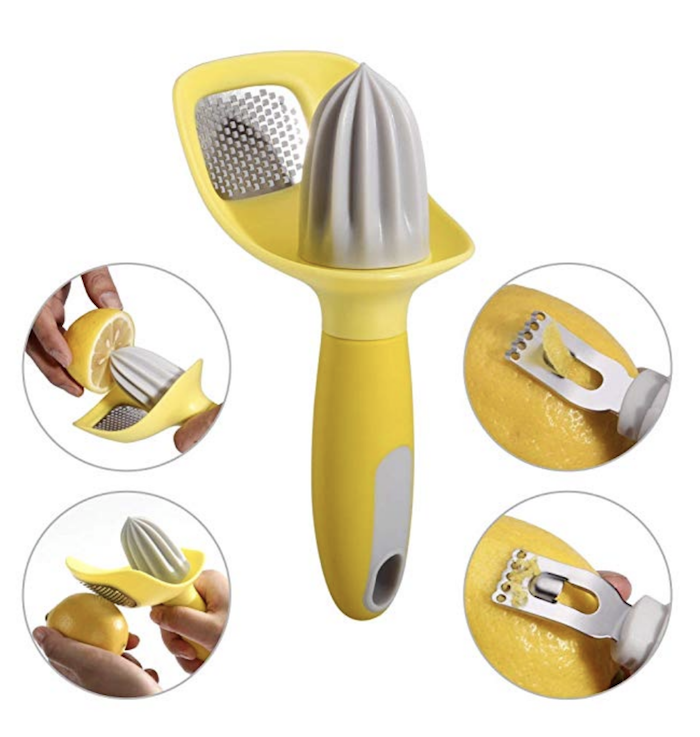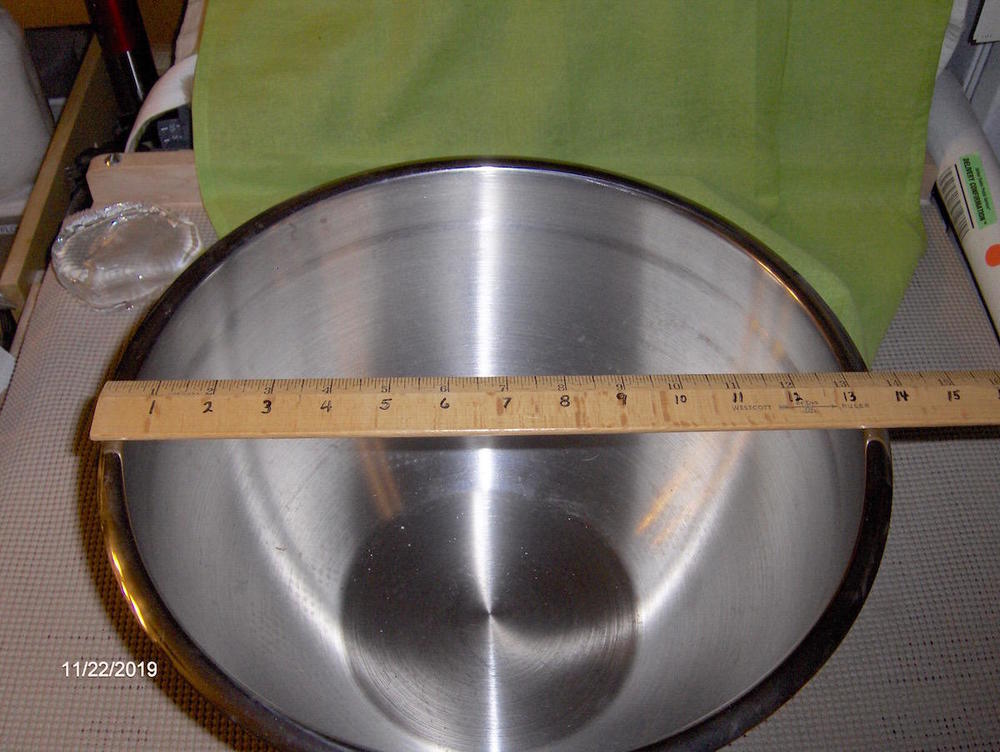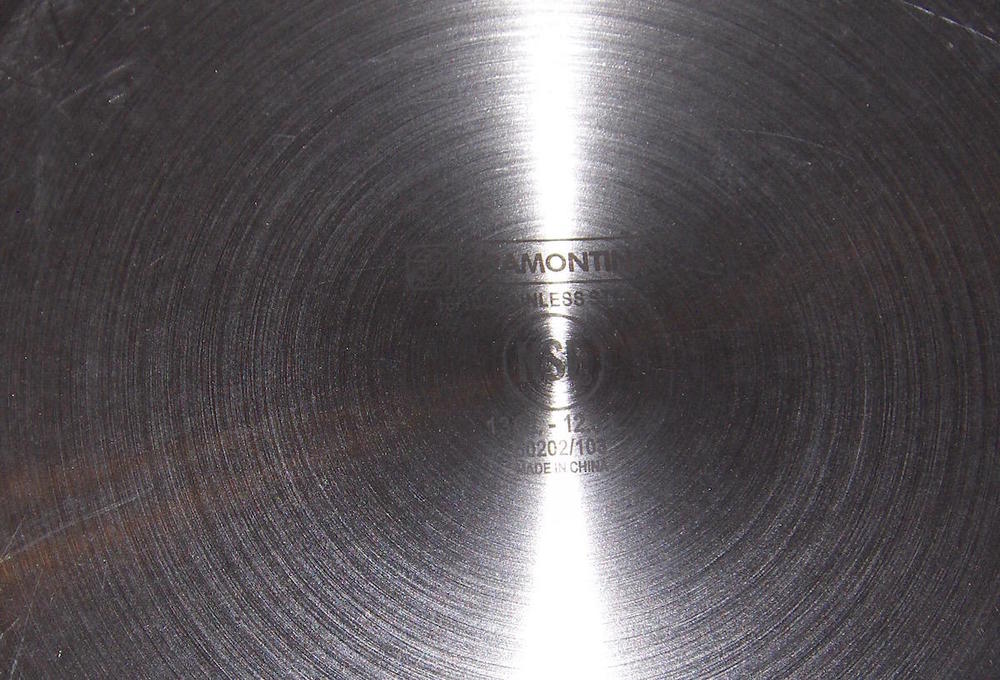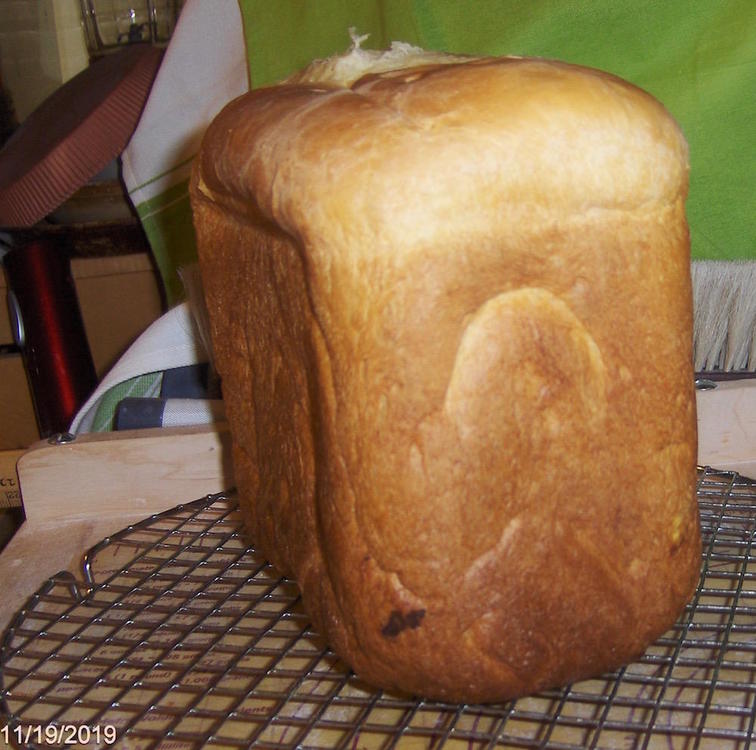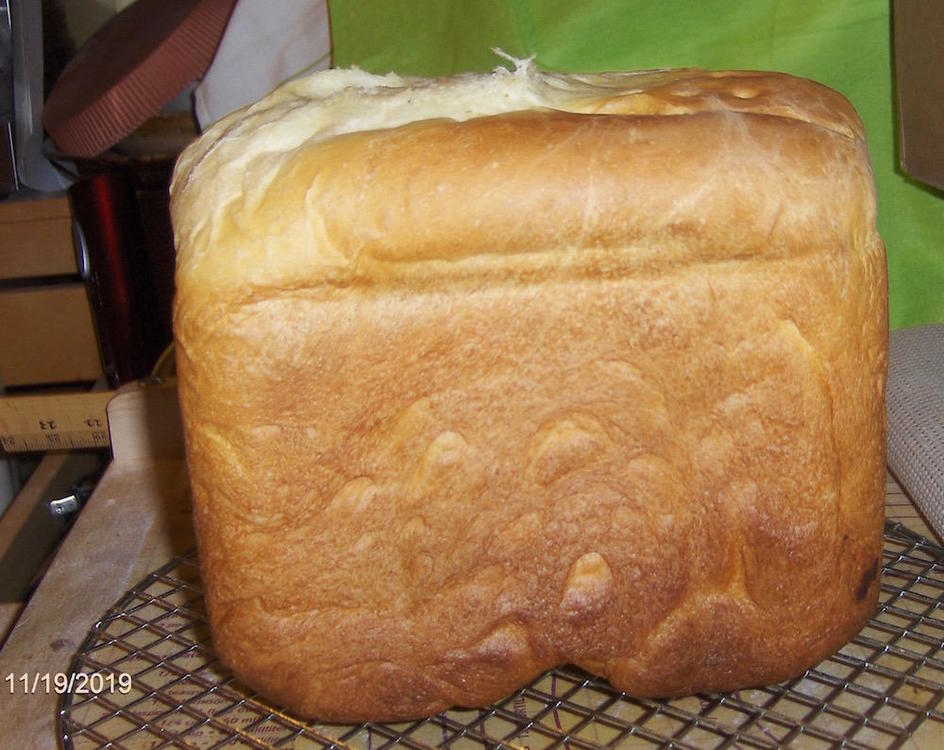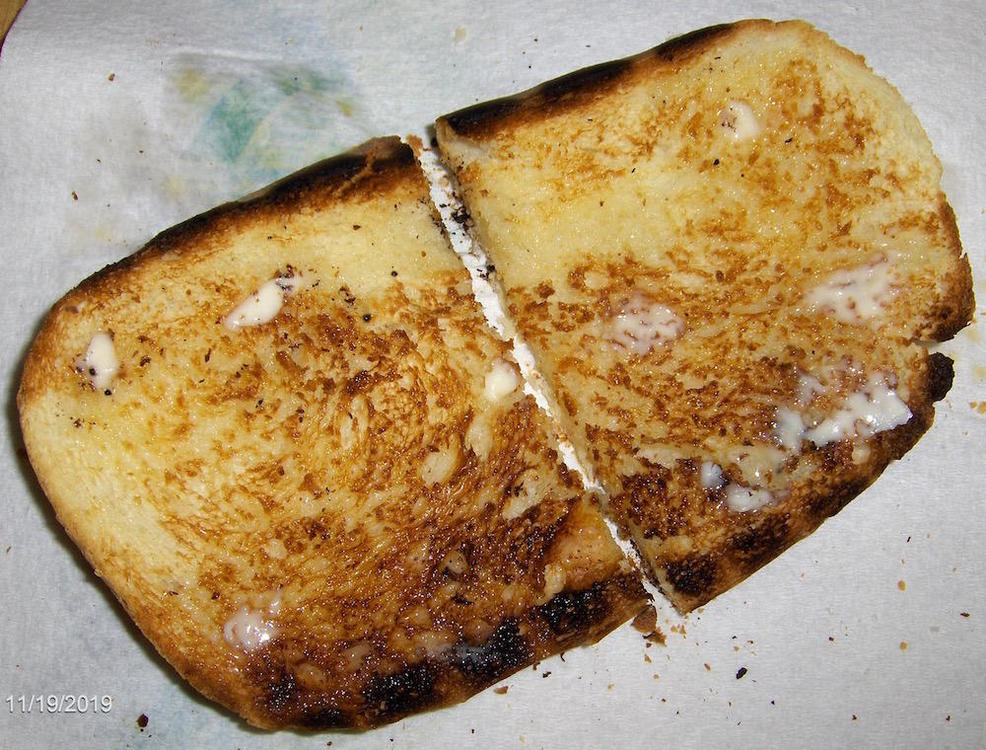-
Posts
11,033 -
Joined
-
Last visited
Content Type
Profiles
Forums
Store
Help Articles
Everything posted by andiesenji
-
Here's one I used to use. Haven't thought of it for a few years since I don't do big dinners now. Josie Speight was a nurse I worked with for 20 years. She was a twin and had an enormous family, thought nothing of doing T-Day or other holiday dinners for FORTY. i was invited a few times. JOSIE’S CRANBERRY GELATIN SALAD 2 cups fresh or frozen cranberries 1 1/4 cups sugar 1 cup water 1 (6-oz) pkg ORANGE gelatin powder 1 cup boiling water 1 (8-oz) pkg cream cheese -- softened 1/2 pint sour cream 2 cans mandarin orange segments, 11oz -- well drained 1 cup ORANGE soda You can substitute orange juice but add a rounded tablespoon of sugar. 1/2 cup pecans -- chopped Combine first three ingredients in saucepan and cook till cranberries pop and mixture thickens set aside to cool. Dissolve gelatin in water. In a mixing bowl, beat cream cheese with sour cream until fluffy. Stir in gelatin and beat until smooth and color is evenly blended. Stir in oranges, cranberries, soda and pecans. Chill until mixture mounds slightly when dropped from a spoon. Pour into a 13" x 9" x 2" dish. Refrigerate for 3 - 4 hours or till firm. Cut into squares. Can be garnished by a dollop of sweetened sour cream and a mandarin orange segment if desired. Sometimes I use a fine zester to get long, very fine strings of orange zest and make curls of this on top of each square. 12 servings This is for a dinner salad. Some people like to substitute Mascarpone for the sour cream but it is not to my taste.
-
SORRY! They are newer, 1980s, not all that hard to find. The price is reasonable, depends on the shipping cost.
-
These are two of the Ryes I got from New York Bakers. I think you can see the texture in these photos. The fine "meal" behaves like coarse whole wheat in combination with regular wheat bread flour for a similar texture. I use 1/3 of it to 2/3 wheat in the sandwich bread I like. The Bay State Wingold Dark Rye is very fine and I haven't used it 100%. I use is half and half with bread flour in a recipe for German Onion Rye. I also used it in Swedish Limpa bread. I think it was 1 cup rye to 2 cups AP. I used this with pumpernickel and whole wheat, 1/3 each to make a dark "cocktail rye" baked in a cylinder mold. Anyway, I mentioned this vendor in another post. I recommend their products!
-
It is possible to get a finer flour using a blender - with caution. I have done it with coarse "wholemeal" wheat flour from England. you have to have the empty blender running and pour a stream of the flour, no more than a cup at a time into the jar and stop immediately. Pour out the flour and check it, it should be almost all very fine. Repeat until you have processed all the flour you need. Sift the result and if there is still a significant amount of coarse meal, put that through the blender routine. Just one repeat, otherwise it can get a burnt flavor. Ive also done this with barley meal and with a couple of the "ancient grains" flours that in the early days tended to be a bit coarser than I liked.
-
One woman who joined Pyrex Passion on FaceBook says her husband is going to sign her up for Pyrex Anonymous. This after they were out shopping on a Saturday - she was driving and he complained he got whiplash when she slammed on the brakes when she spotted a thrift store with Pyrex in the window. Then he felt back strain carrying the box of stuff she bought because the prices werre so low.
-
P.S. I baked some modified pumpernickle in a 4x4 pullman pan and sliced it very then to make Rye Melba toast. Turned out perfect.
-
I have written a couple of times before about the flours I have ordered from The NEW YORK BAKERS - who, oddly, are in San Diego. They have a great selection of RYE FLOURS AND IT IS A SPECIALTY . And, if you are confused about anything, CALL THEM! I have and they are great and very helpful. The New York Bakers 2934 National Ave., Suite E San Diego, CA 92113 (619) 508-7720 They have selections of flours in "Flour Pantries" where you get an assortment of several flours in smaller amounts so you can try them. I don't know of any other vendor that does this. I got the pumpernickle flour pantry and really had some fantastic results with it. So take a look at the list of Flour Pantries.
-
Ummm. I was sent a new combination lemon tool to test and review a few months ago and it is new on the market. Publicized as the "Ultimate Citrus Gadget" It is very handy, can be hung up to store and is quite efficient and at a very reasonable price. I have electric juicers and many zesters so I gave it away after I finished my review. I should add that one can zest the lemon, cut off one end and juice the whole lemon with this reamer, instead of doing the two halves. I found it much faster and it really produces a lot of juice - I do microwave the lemons for 15 seconds (up to 3 lemons) longer for more.
-
There are many extremely "avid" or even fanatic collectors of Pyrex out there in the wild. There are several groups on FaceBook and it is difficult to believe some of the prices the rarer pieces sell for on ebay, etsy and the other auction sites. At estate sales there have been battles over those unusual pieces. I offered a set on ebay before I was aware of this a few years ago and was shocked that a set I had offered at $45. was bid up to 195. I had no idea. I had a Pyrex book but it was published in 2005 and obviously the prices were way behind the fad.
-
I showed that bowl upside-down because it is difficult to se the shape when it is upright. I prefer that style/shape because one can really mix vigorously without the contents slopping out. And in fact these were marketed by Tramontina as "Splash-proof" and I would "anchor" them with a wet bath towel coiled around the bottom. I also used this one and the largest, for soaking and washing fruits and veg I was going to can, especially when I had to buy commercial fruits and needed to wash the wax off. This was particularly necessary with cucumbers that I would be turning into pickles. Some of them had thick wax coatings. And I did not want to be washing the wax down my sink drain. This one was just deep enough to place my 12-quart stockpot, in ice water to cool stocks and soups rapidly. Versatile shape and size.
-
This is the next to the largest of this set of Tramontina bowls I bought at Star Restaurant supply in about 1990. It is a 13 quart, 12 liter. The biggest one is currently full of a bunch of cast-iron molds and a couple of other things. I think it is a 15 quart. This one has a lot of utensil marks in the bottom from extra-large whisks, huge spoons and my favorite large Danish dough whisk which is so handy in mixing thicker doughs and batters. This was also the bowl I used for my more energetic sourdough starters - before I got my extra-large Cambro containers.
-
Ah yes, the promise of a "special" Birthday meal. I rewarded my 16-year-old stepdaughter one year with a rather spectacular birthday because she had not only taken care of my dogs while I was on a 10 day dog-show circuit but whelped a litter of puppies that arrived 3 days early, took excellent care of them and their dam as well as the others. Her birthday was in mid December so for her I made a Croquembouche. She had invited 3 friends - her favorite meal was beef stroganoff with glazed carrots and creamed potatoes and peas. They had the dining room to themselves for about 3-4 hours and I could hear a lot of giggling and some music. They enjoyed it and I guess is was a subject at school for the remaining week before the holiday break. They ate every bit of the Croquembouche. The other girls helped Liz clean up pretty well.
-
I did have one bread machine, an unusual name and only sold here for about a year or less. It was made in Korea and had a horizontal pan that had twin beaters that were permanently fixed but they FOLDED DOWN flat which was quite clever. The pan itself was shallower than I liked so I gave it away. I have never seen the brand again, at least not the bread machine. It may have been "Tiger" or something like that. I seem to recall a "cat-like" name.
-
It certainly makes for a much neater loaf. I am still surprised that NONE of the bread machine manufacturers have ever added this process to their instructions. I have been writing to them and suggesting it for at least 30 years. I have owned many bread machines. Currently I still own eleven. It is especially important in the horizontal pans with two beaters, like this 3 pound machine. I began doing it with my first Zojirushi machine which was a vertical pan but had a "peg" that was inserted through the side of the pan to "catch" the dough and assist in kneading. It had to be removed before the baked loaf could be extracted from the pan when done. I began removing both it and the beater at the end of the last knead and just continued to do it with later machines. I always put my suggestion in reviews I wrote for machine and in post in the various groups to which I belonged. The Bread-Baker's digest, an e-mail group that has existed since before the internet.
-
Baked in the 3-pound bread machine. 2 cups bread flour, 2 cups white whole wheat flour, 4 tablespoons whole milk powder, 1 1/2 teaspoons SAF Instant Premium Yeast, 2 tablespoons sugar, 2 1/2 teaspoons salt. 1/4 cup vegetable oil, 1 1/2 cups warm water. The loaf rose till it just touched the lid and then shrunk slightly so that it did bake completely on the #1, White bread setting. The only thing I did was after the last "knock-down" brief knead, I removed the dough from the pan, extracted the beaters, replaced the dough and allowed the cycle to complete.
-
Since I posted in August 2005, I have sold most of my Pyrex and other vintage bowls - I had a very large collection. I still have all my stainless bowls from the enormous to the 2 cup size, my vintage melamine Rosti bowls I bought in 1968 and still use several times a week because they are the perfect size, the perfect depth and are easy to hold and nowadays, with my arthritic hands, that is important. I no longer make things in large batches so could dispense with most of my extra-large bowls. I have added a couple of semi-flexible silicone bowls that are designed for microwave use. I haven't used them enough to review them. They were sent to me for use and review and are not yet released for sale.
-
I had one for about 20 years - I originally got it after killing two Kitchenaids trying to make Peter Reinhart's "Struan" bread from Crust & Crumb. It is a very dense dough and the gears of the KAs during those years were just not up to the task. I had purchased the first one at Costco and since they have a "no-fault" return policy I took it back in and got a replacement. When I returned with the second one two weeks later, they suggested I might get a "heavy-duty" mixer. So I ordered the AEG 2000 - which was that year's name - from Pleasant Hill Grain as they included some extras for free that other vendors added on. I used it quite a bit for large batches of dough as it could handle much more than the KAs. I rarely used the dough hook but did find it useful for blending batches of ground fruits and nuts for pastry fillings and for "sugarplums" and for fruitcakes with stiffer doughs. Probably 85% of the time I used the roller/scraper for bread doughs, cake batters, etc. The twin beaters in the aux bowl produced great volumes of egg whites and faster than the KA so you have to watch that they don't get too stiff. The timer was a great feature because I usually had two or three tasks going at the same time.. I think all mixers should have timers.
-

Milling and Baking with Heritage and Ancient Grains: Bread and Beyond
andiesenji replied to a topic in Pastry & Baking
Looks perfect to me. -
She never made it for us. It was one of the dishes she made for her family and the few other Gullah people who had come to Kentucky to work for my grandfather and his brothers because they paid so much better than employers in So. Carolina. She cooked crawdads for us in other ways but this was a stew cooked outside in a big iron pot and like gumbo, included okra, corn on the cob broken into pieces, beans and greens which she never cooked for the big house. She used a hand-cranked wire tumbler set over a low fire to dry the crawdads, had one of her sons or a grandson turning it. All I can remember was that it smelled odd.
-
I'm 80 and was born and raised on my grandparents farm, which during the 1940s, the war years, was pretty much self-sufficient. It was a very large farm and my grandfather also owned a grist mill, a sawmill, a sorghum processor, smokehouse and an ice plant. There were fruit orchards and drying sheds - galvanized metal roofs with screened in sides that got really hot on sunny days. There was a lot of canning, meats were turned into sausage and smoked. Hams, bacon, geese, ducks, fish, etc were also smoked. Pickles, several varieties and pickled vegetables, three varieties of sauerkraut and something made with crabapples, which I never liked. A couple of kinds of cheeses that were preserved in brine. And my grandfather's cook had a "secret" process for drying crawdads from which she made a Gullah stew from the lowcountry.
-
I have several favorites - haven't been able to afford most of them during the past couple of years and some have changed during the decades that my tastes have evolved. I like the stories about visiting cheese makers and such. One of my earliest experiences was when I was a teenager and working at my mom's bakery after I graduated high school. I worked nights and every Friday morning EARLY, I would box up an assortment of sweet rolls and hard rolls, three or four "rustic" loaves and haul them up to the Stella Cheese factory just outside the village for the morning meeting of the department heads and the foremen. I never returned empty handed, I would be given a large chunk of gorgonzola or a quarter wheel of fontina or a fiaschetta of provolone. I would slice some so the bakers and the doughnut guy and I could have breakfast. The main bread batch would have been out of the oven (usually me) for an hour so would be okay to slice. Or the ryes would be about ready to pull, both the panned and the open. Back then my favorite was the aged Fontina - they produced a one year old and a two year old. The store at the factory sold only 1/4 wheels and larger. A wheel of gorgonzola weighed approximately 8 pounds and a one-ear-old Fontina wheel was about 12 pounds and a two year old 9-10 pounds. A lot of people complained about the smells from the factory, when the wind was from the "wrong" direction but it never bothered me.
-
Brazil nuts have a unique flavor that is different from most tree nuts. My grandparent's cook used to buy a "peck" basket of them - a quarter of a bushel - and boil them in the shells and then roast them. My cousins and I would be seated on the floor with old cast-iron sad irons upside-down between our legs and with hammers to crack them and a couple of the women helpers would remove the nuts from the shells. I think they were boiled to kill an occasional bug or worm. She would slice some for baking, some were ground and made into a lovely pudding (I wish I had that recipe, it was delicious. One of her sons, who occasionally worked in the kitchen, would carve little animals and pixies, etc., from the largest Brazil nuts and arrange them on trays to display. The Brazil nut cake, fruitcake, was made with 2 pounds of the nuts, chopped coarsely, "white" raisins and fresh coconut. It was quite moist and was not intended for aging - besides it would never have lasted that long. Cook made a syrup cooking the raisins, the grated coconut and the coconut water until it was thick. The solids were strained out and mixed into the batter and the day after it was baked - and left out overnight - the syrup was drizzled onto the cake. And that's all I can recall. It was baked in a large, deep rectangular pan.
-
I use an inexpensive curved PRUNING SAW which has teeth that are designed to easily catch on hard surfaces and cut deeply and cleanly. I cradle the squash in a large folded towel so it won't roll. I have posted about this several times in the past. I used to grow a lot of winter squash, some quite large blue and red Hubbards. In fact, I think I posted about this last year.
-

Ahhhh Wonderful butter ... different foods / different butter?
andiesenji replied to a topic in Cooking
I saw this thread last Thursday and was going to post about my method but became distracted with a medical problem and spent most of the day at Urgent Care hooked up to monitors and having a couple of vampires draining my blood and sticking stuff into me. (They really were dressed up as vampires. High Desert Medical Group does Halloween in a big way!) Anyway when I finally got home I was too exhausted to even look at the computer. I had been instructed to REST and take some new meds for my afib, blood pressure &etc. I still make my own butter most of the time. It's not difficult with the correct tools. Some large butter pats are essential because nothing else works out the residual liquids as well. About every 4th time I make cultured butter, but if you don't like that flavor, don't bother. If you can find Manufacturing Cream, the butterfat is higher than heavy cream and the flavor is better, especially for baking delicate cakes that don't have a strong flavor. -
I'm bumping this up to make a comment about a ketchup that is new to me but which has really impressed me. Remember the thickness, the texture and the FLAVOR of ketchup 30 years ago? I do and when it became "blah" I resorted to making my own that had just a tiny hint of spiciness that caught the back of the throat when a French Fry was dipped into it and transferred quickly to the mouth and it DID NOT DRIP! I shopped at Aldi for a couple of things - accompanied a neighbor who was kind enough to transport me to Urgent Care and on the way home she needed to pick up milk and butter. I wandered down the aisle where the condiments live and came across Burman's Ketchup. Wow, this tastes like the ketchup of old. Very complex flavor profile. Generous size bottle.




